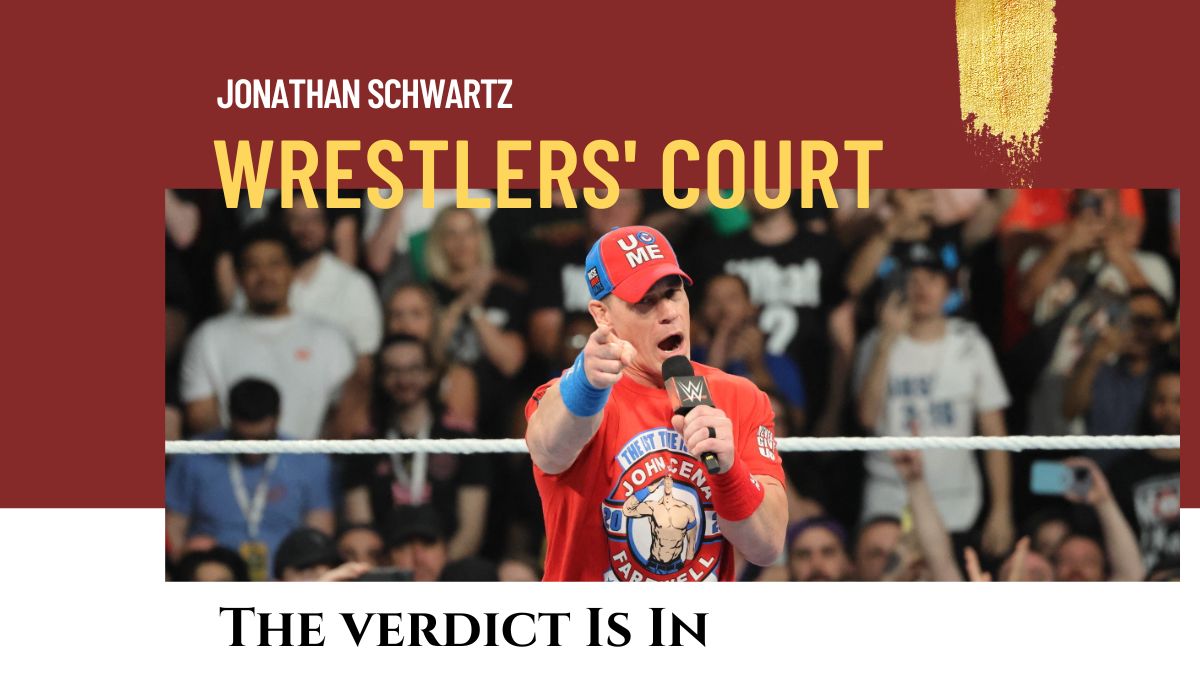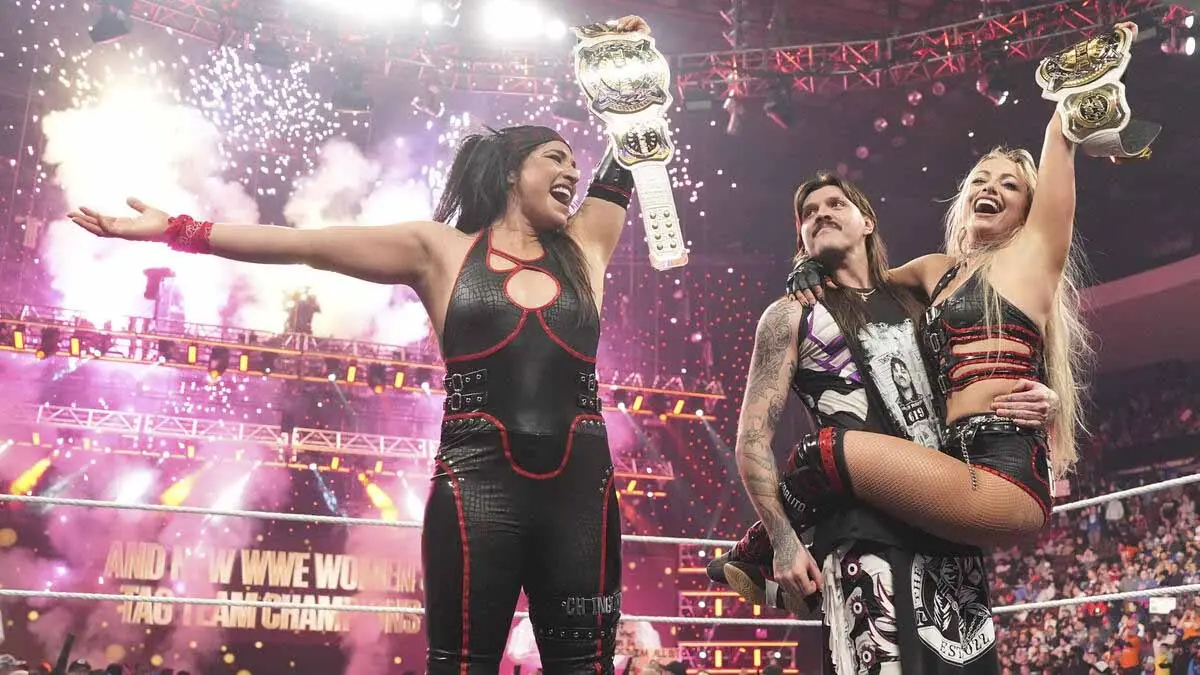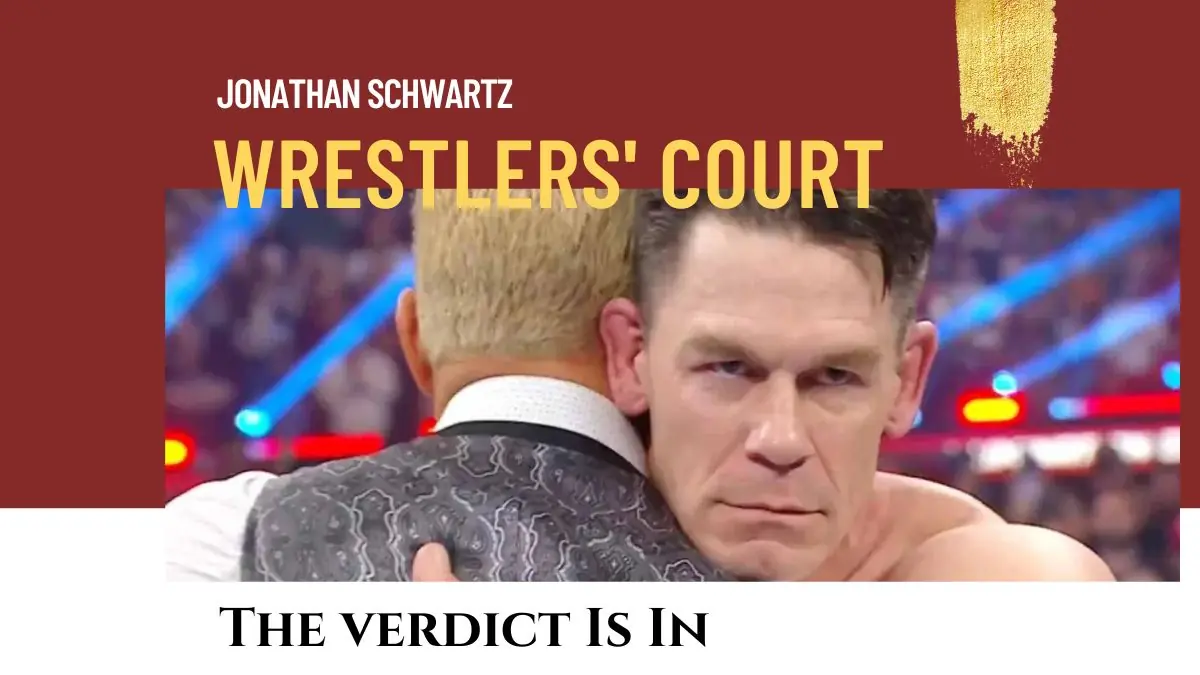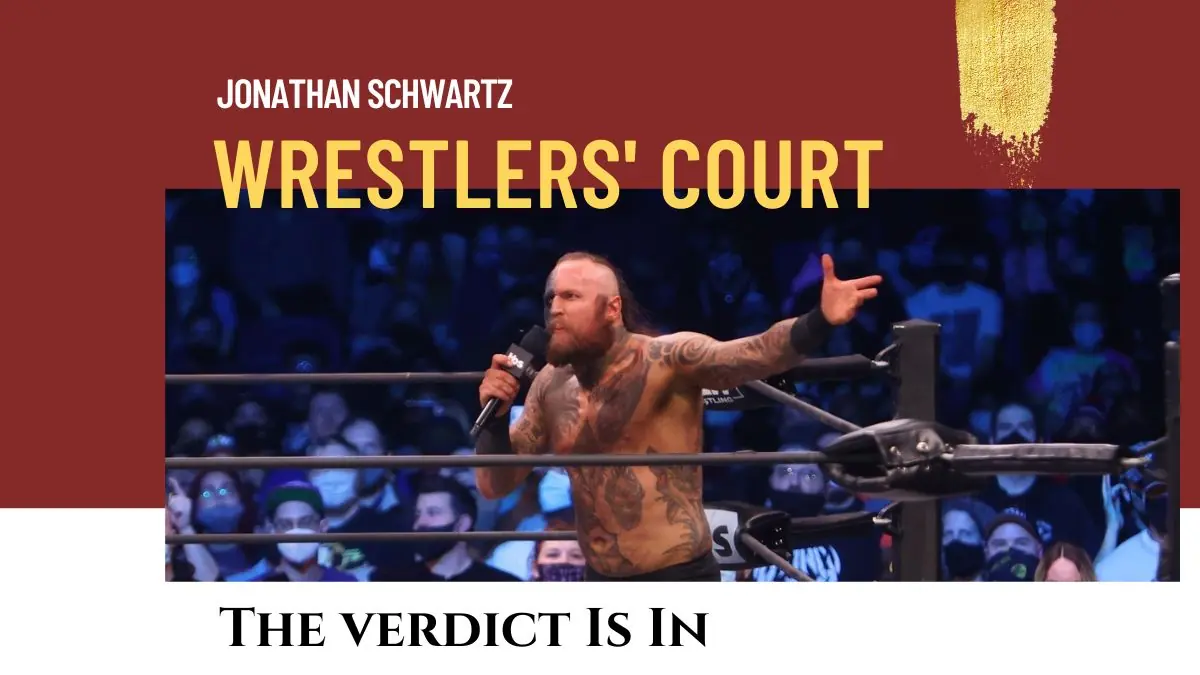On Saturday July 6, at the Money the Bank Premium Live Event in Toronto, John Cena announced his impending retirement.
Cena’s announcement hits differently from most WWE retirements. He has been preparing his audience for this news for years, openly discussing his age and the effects of time on his body — the toll that matches take and the need for greater recovery time between performances.
We are already part of Cena’s sunset. His run at the top of WWE arguably spanned 2005-2015. He had a great feud with AJ Styles in 2016-2017 which culminated in his winning his 16th World championship, then lost it two weeks later. For the last seven years he’s been an occasional performer, participating in runs up to big shows like SummerSlam or WrestleMania and then riding off into the sunset. We can still see him, just in movie theatres or DC cable series or garbage bag commercials. When he does show up he often loses to emerging talent like Austin Theory or Solo Sikoa. It’s already a long goodbye.

Saturday’s announcement gives fans plenty of official lead time. Cena estimates that he has 30-40 dates before he exits. He made sure to name-check the big events between now and then. Cena has said this year’s WrestleMania will be his last as an active competitor, but it seems like he may keep working dates through the end of the year. This differs from most pro wrestling retirements, which juice interest in short runs to a final match (which is often not so final … see: Ric Flair), take place suddenly due to injury (like Adam “Edge” Copeland or Daniel Bryan, both of which were temporary, as was their WWE ‘lifer’ status), or don’t happen at all, leaving fans to figure things out after the fact (like Dwayne “The Rock” Johnson or “Stone Cold” Steve Austin, though both men have also come back after long layoffs). Random social media announcements like Vince McMahon’s, or leaving announcers to do the work on WWE TV shows like The Undertaker present further options.
Cena is still wrestling and the tributes are already pouring in. I think it’s more fun to ponder what he will do over his summer vacation and through the end of this run. Plenty of WWE Superstars past and present have announced their hopes of working with Cena before he goes. I’m sure part of this eagerness stems from to the payday that comes with a guaranteed main event slot, but at least some of it reflects the respect that Cena earned during his decade at the center of WWE programming.
Speculation has already begun about Cena’s opponents on his farewell tour. Some suggest a formal heel turn, like The Rock pulled before this past WrestleMania. This would be a terrible idea.
I’ll dispense with the idea of babyface vs. heel. Cena has transcended that divide for years. In fact, I would argue that for much of his tenure Cena was the biggest heel on the roster.

Frequent opponent CM Punk (I’ll get back to him) has often said “The greatest trick the Devil ever pulled was to convince the world he didn’t exist.” This quote is from the movie The Usual Suspects and is often attributed to the writer Baudelaire. The sentiment predates it’s literary (and pro wrestling) use. It goes back to the early 1800s and attempts to defend organized religion. The fact that so many people don’t believe in the Devil is taken as strong evidence he exists, since if he did exist, that is what he’d want us to believe.
Cena has pulled his own impressive trick: Convincing the WWE universe that he was ‘just’ a babyface in the mold of Bruno Sammartino, Bob Backlund, Hulk Hogan or Bret Hart (the latter three before their own falls from babyface grace). From the beginning, Cena understood that for a certain, vocal segment of the audience (in fact, the most coveted segment, the males aged 18-35) he wasn’t the hero: he was an arch-villain out to ruin more complex characters’ fun. Cena played the cartoon hero like his predecessors, but his matches openly taunted the boo-birds, who (eventually) grew to love him for it. Paul “Triple H” Levesque put it best: “‘Dude, what do you care? You’re the Yankees and the Red Sox at the same time.’ The place is sold out.” It is easy to forget that Cena was initially a bland babyface who answered Kurt Angle’s challenge and spawned “Ruthless Aggression”. He attracted notice when he turned heel as the freestyling ‘Doctor of Thuganomics’ and while he mostly stopped rapping in-ring he never left that character fully behind. The Doctor would appear in particularly heated feuds with personal shots cloaked as promos and a sense of desperation in matches that are the hallmark of a heel’s work. There’s no reason the change that now.

CM Punk has openly campaigned for a last match on RAW. I hope he gets it. For me, the 2011-2013 Cena vs. Punk series defined an era: a popular, kid-friendly superstar in Cena vs. the adult in the room in Punk. Both men showed how well WWE could cater to distinct segments of its’ audience and assuming they can still work each other safely, I’d love to see one more match between them.
Ditto for Randy Orton, who is probably the “Macho Man” Randy Savage to Cena’s Hogan — a perennially great opponent and capable alternative as The Guy though never quite as popular (I think Orton and Savage were wasted as babyfaces; their respective, insane approaches to their heel characters were so much better).

Further down the card, The Miz has indicated his interest. Miz catches a lot of flack from fans as an ‘entertainer’ rather than a ‘wrestler’. I think that’s unfair. He’s a fine wrestler who, despite not being a flashy bump machine has put over countless opponents. He is also one of Cena’s few repeat WrestleMania foes, defeating him in WrestleMania XXVII’s main event, and losing alongside Maryse to Cena and Nikki Bella in a featured contest at WrestleMania XXXIII. Miz is an underrated heel whose promo skills could bridge the gaps between Cena’s limited dates on the way to a Premium Live Event match. I know I’m in the minority but I’d watch that match.
If Adam Copeland were still healthy and part of WWE I would have loved to see that as well. Edge put on some great performances in his last WWE run, including an early series against Orton. Copeland’s feud with Cena made both men: the ‘rap’ vs. ‘metal’ personas they inhabited were a great shorthand for audiences, and the matches between them gave them credibility with adult fans. Cena’s cartoon character had to grow up to beat Edge’s opportunistic sleazebag. I know it won’t happen. At least I hope Tony Khan will allow Copeland to appear on camera when Cena is inevitably inducted into WWE’s Hall of Fame, and WWE will permit it.

Pitting Cena against established talents like these, who may be closing in on their own retirement dates, offers a way to build Cena on his way out of the ring, but in my view that’s not how to maximize the matches he has left.
Cena’s retirement tour should be more than a Greatest Hits show. Cena is known to have arrested the pushes of some promising talent early in his run (which has been alleged by stars as varied as Alex Riley, Wade Barrett, Damien Sandow, Zack Ryder, Ryback and Mr. Kennedy). He has also worked to put other talent over — I’ve noted Sikoa and Theory — and if Theory is going to turn babyface as planned you could do worse than a well-timed run-in and a high-profile tag team match to follow. One early program might be against Karrion Kross, who has started pointing out his victories over former WWE champions. Cena would certainly fit the bill. Gunther is another obvious choice, the kind of physically imposing foreigner Cena regularly fought and beat as champ.

I think there’s potential for a feud with current World Champion Damien Priest, who seems to be teasing an eventual face turn as he distances himself from the rest of the Judgment Day. Priest looks like and carries himself as a champion. He has been hampered by unenthusiastic booking behind CM Punk vs. Drew McIntyre (which has been awesome) and storylines that privilege every member of his stable but himself, as well as by televised in-ring mishaps. A feud with Cena would be even more interesting if, as the Judgment Day breaks apart Priest is paired with Carlito in a bit of long-term storytelling. Carlito was a frequent adversary of Cena’s and the first man to beat him for a title (the US belt, which Carlito won his first night on the main roster). A program alongside Cody Rhodes would build on the torch-passing series of spots during Rhodes’ win over Roman Reigns. Sharing a ring with Cena might cement Rhodes as The Guy, at least until the next guy comes along.

Rhodes and Priest are deep enough into their careers that they’re not far behind the legends I mentioned above. Rubbing shoulders with Cena wouldn’t hurt either man, but this late in their games it won’t make them as superstars either. WWE is still figuring out how to present younger stars like Bron Breakker and Trick Williams; they’re the kind of wrestlers Cena could really help, but WWE needs to conclusively establish their identities first. Right now, they’re in the same position as Cena was when he slapped Kurt Angle 20 years ago: great athletes with a ton of potential, but lacking clearly defined characters for fans to embrace, oppose or (like Cena figured out years after that slap) both.
Getting newer talent over means Cena takes his share of losses. Defeats are an important part of pro wrestling and weirdly can help build reputations as much as victories. In the twilight of his career, Cena needs to lose to help keep business moving forward. In the mid-1980s Bruno Sammartino emerged from retirement to do the honors for the likes of Randy Savage, Adrian Adonis and Roddy Piper. Post-Attitude Era Hulk Hogan put over The Rock, Triple H, The Undertaker, Brock Lesnar and Kurt Angle. Wrestlers aren’t over-burdened by the idea of losing but I wonder what they think about how those losses are valued. Hulk Hogan’s loss to The Rock at WrestleMania X8 improved both men’s standing in wrestling history. Kurt Angle dropping a retirement match to Baron Corbin helped no one.
Pro wrestling retirements are often honored in their breach. Wrestlers who retire prematurely due to injury often come back if they are able, as advances in medicine and aggressive rehabilitation give them the chance to go out on their own terms. Others may have to come back just to make a living, either because of their lifestyles or because Plan B doesn’t work out; still others just miss the unique high that comes with performing before a live audience. Mick Foley likely intended his retirement announcement in 2000 to be permanent. He was coaxed back for several runs, including stints with other promotions out of a combination of the above. I think other wrestlers treat retirement as kayfabe. Terry Funk first retired in August 1983, and didn’t retire from retiring until 2017.

Cena has said that he plans to continue working with WWE but will put away the jean shorts and refrain from further matches or guest referee duties. For a wrestler whose persona demands strength and a heavily muscled appearance, this makes sense. Cena has gotten leaner as he has aged and shifted his attention to a variety of roles and seems to understand how difficult it would be to keep himself in wrestling shape (I think it’s probably smart from a health perspective, seeing the challenges which have affected 1980s musclemen like Sylvester Stallone and Arnold Schwarzenegger as they have aged).
We may not see John Cena in a wrestling ring again, but we’ll definitely see him around.
TOP PHOTO: John Cena at the Money in the Bank PLE on Saturday, July 6, 2024, at Scotiabank Arena in Toronto. Photo by Steve Argintaru, Twitter/IG: @stevetsn
RELATED LINKS




